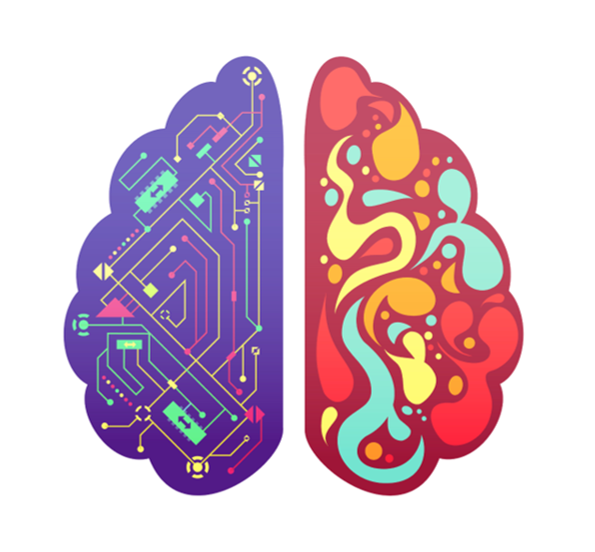If you need to open your mind and metacognitively be aware of how our brain works and how we can change habits in our daily lives to improve our learning in a variety of fields. This course is for you (I am not selling it, but you should check it out, it is worth it).
Visit Coursera and enroll on the Course “Learning How to Learn: Powerful mental tools to help you master tough subjects”.
I sincerely had no expectations, but I was curious and skeptical about the previous title, so, I decided to open my mind and dive in.
We are introduced with several concepts which I will briefly describe in this post. Although, I fully advise that if this called your attention, check out the full course material to gather a broader understanding and you will acquire a conceptual framework to communicate with your peers. I repeat, it will be worth your time.
- Focused and diffuse modes of thinking.
There at two types of thinking. The focus mode which requires our full attention to acquire information, but not everything is about being focused. We also have to make pauses AKA relaxation time. Our diffused modes of thinking are activated unconsciously in the background and we start reviewing concepts or ideas that we were studying in the focused mode. This justifies the importance of balancing your studying times without stopping to enjoy your life, and being persistent.
- Key techniques proven by research to help students learn most efficiently
They share a variety of techniques such as the Pomodoro that consists of committing on activating your focused mode to study a particular topic for 25 minutes (without distractions). At the end we should reward ourselves with a rest in any particular activity that we enjoy. The key of the Pomodoro is respecting the 25 minutes. Spatial studying is also effective, not cramming everything at once for hours.
They also analyze how we procrastinate as a safety mechanism because we associate focusing on something that seems uninteresting as pain. The explain that we should focus on “processes” instead of “products”. Trying to achieve a product generates the stress and we cannot focus adequately.
Other techniques a recalling, memory palace and the use of concepts of working memory and long-term memory help a lot.
- Illusions of learning
They debunk conceptual maps and highlighting texts by arguing that these created “illusions of competence”. They emphasize that recalling (this means testing yourself without saying the word test) is more effective and they argument why.
- Memory
The importance of memory by repetition and its relationship to a concept named chunking. The working memory is the one that acquires these words and combines it with understanding. This ensures and tries to persistently promote the creation of long-term memory in the brain. Combine with other concepts such as interleaving.
- Chunking
This means that you combine word, ideas, concepts by understanding and creating our own working framework.
- Sleep
The importance of sleeping enough to allow our brain to learn and to eliminate toxins in our brains that affect our learning experience.
- Analogy, metaphor, story, and visualization in learning
The importance of using different ways of understanding and recalling information. It creates a meaningful experience by atypical and significant means.
- Transfer of ideas and concepts from one area to another
There is a concept called interleaving where you apply concepts of different fields of knowledge allowing yourself to be creative by analyzing problems from different perspectives. You literally transfer ideas you learned from one field by connecting them with another.
- Deliberate practice
We must practice intentionally at different unexpected moments, especially with topics that are hard to grasp. Me must be consistent.
- Interleaving
It is healthy to switch between ideas from different field allowing us to making connections and transferring ideas in creative ways.
- Procrastination
Procrastination seems as an escape from painful tasks, but we must focus on the processes and not the products. We must enjoy it as much as possible, not running away from it. Use the Pomodoro technique.
- Testing
We test ourself by using recalling. Trying to remember what we learned to ensure it is part of our long-term memory.
- Mindset
There is a concept they taught called Einstellung, where we are trapped with a certain way of thinking or approach to solve a problem. It hides and doesn’t allow us to find new ways of seeing things, we have to be conscious that we can be trapped in a Mindset and this doesn’t allow use to learn or find new ideas in creative ways.
- Working with others in learning
It is proved that collaborating with other improves our learning, we should forget and stop associating studying with being by ourselves. We have to apply peer teaching and learning.
- Cultural similarities and differences in learning
We all have different ways to approach different ideas, we can learn from our differences.
- Life-long learning and broadening your passions
We never stop learning and we shouldn’t only focus on our talents/passions. We must forget that we our only good for certain things, we must be open to different ideas and eliminate the prejudice or the idea that it is too hard and that we are not capable.
- Learning independently
All of these previous ideas allow us to improve ourselves, our minds and overall be able to master fields of study that seem difficult. But they really aren’t, we need discipline and openness.
I recalled and wrote all of this post in 15 minutes. I don’t know if this means that the course is magical and that it will immediately solve all your learning problems. But it surely helped me a lot to be a better professional, student and, hopefully, teacher.
Important Note: The image shared at the header of this post is called “Dopago – Hack your brain” from Junhyung Park.



Leave a comment